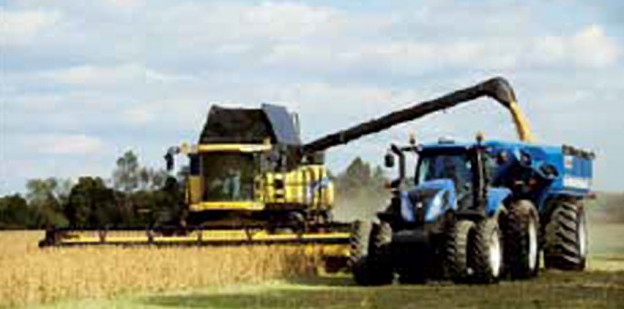

February 1, 2014 | Categories: Profiles
(This custom publishing article first appeared in Bloomberg Businessweek.)
In the spring of 2024, the world’s population will reach 8 billion, according to United Nations’ estimates, having made the hop from 7 million in a mere 13 years, and marking an uptick of 6 million over the past 100 years. All of those mouths create serious global sustainability challenges, including the biggie: they all gotta eat.
To provide sustenance at the scale necessary, the world’s farmers must increase productivity and efficiency—and preserve the environment that allows their crops to grow. This requires clean technology solutions for the agriculture industry, such as strategies based on widespread use of biomass (organic materials used as fuel) to power farming equipment. According to the Union of Concerned Scientists, tripling the use of biomass for energy in the U.S. could provide as much as $20 billion in new income for farmers and rural communities, while reducing global CO2 emissions at a level that’s comparable to taking 70 million cars off the road.
“New Holland is a full participant in the push for sustainability, and, as biomass becomes more predominant, we build our products to meet the needs of North American producers and the environment,” says Ron Shaffer, Director Growth Initiatives, Institutional and Specialty Sales at New Holland, a global leader agriculture equipment manufacturing. “Biomass is going to be a part of agricultural production as we more forward, and we want to be out front and maintain a leadership position.”
New Holland’s initiatives in this regard are known collectively as its Clean Energy Leader platform, and it consists of four pillars:
Through its network of more than 1,000 dealers in North America, New Holland offers a complete range of product solutions for farmers, from powerful forage harvesters to material handling equipment—but the commitment doesn’t end there: “Farmers grow the crops which will later be transformed into energy alongside a whole host of farm waste, which would otherwise be simply thrown away,” says Mark Hooper, Director of Marketing at New Holland. “New Holland is uniquely situated to support the significant growth in the biomass industry, and that’s why we currently support biomass research projects surrounding at the University of Illinois, University of Nebraska, Penn State and Iowa State.”
Two solutions offered by New Holland that have proved especially effective are its engine and precision farming technologies. “We are very proud of the engine technology we use in our high horse power equipment,” says Shaffer, noting that Tier 4B emissions regulations on high horsepower equipment that go into effect this year mandate a 95 percent reduction in nitrogen oxide and particulate matter pollutants. New Holland’s ECOBlue™ HI-eSCR (high efficiency selective catalytic reduction) treats exhaust gas by using an after treatment system that transforms these harmful pollutants into harmless water and nitrogen before entering the atmosphere. “New Holland is the only manufacturer to use an SCR-only solution in its high horsepower tractors, so this really puts us ahead of the competition and means our engines can do exactly what they are supposed to do—produce power—without any restrictions,” says Shaffer.
New Holland’s emphasis on precision land management technologies enables farmers to increase efficiencies, customize operational needs and improve their yields. “We’ve integrated a single large screen display into all of our high horsepower tractors that enables users to control key functions and run precision applications, such as auto guidance, that has repeatable sub-inch accuracy, as-applied mapping and control mixed fleets of implements with section control and variable rate application technology,” says says Christopher Carrier, Marketing Manager, Precision Land Management & T7 Series Tractors, New Holland.
“And we are advancing toward a more efficient means of managing the data our producers collect with this technology, so that they can continue helping them increasing the yields they get from their land.”
See the full article PDF that appeared in Bloomberg Businessweek.
Leave a Reply